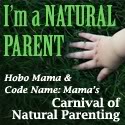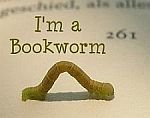 After my experience at the Island School, I came back wanting to incorporate what I had learned about place-based learning into my teaching style. Place-based learning involves learning the subject through an exploration of where you are, your “place.” I’ve done a good job doing this with my Botany classes, since we spend a lot of time outside identifying plants. It’s the botany/biology of Connecticut, and biology is my area of expertise. Although I do a lot outside with my environmental science students, I feel that I have a lack of understanding of the geology and environmental chemistry of our area. That’s why I’m so excited that I signed up for the course I’m taking this term: The History and Management of Long Island Sound: Environmental Issues. Since we live minutes from the Sound, it’s so exciting to be taking a course that’s place-based. Now I’ll have the background I’ll need to better teach my students, and I’ll enjoy the course because it’s so relevant to my life. Ed’s family’s aquaculture business (clams and oysters) is of course dependent on the Sound, and my professor is part of a group that just got a grant to study oysters in the Sound, so I’m very interested to hear about that project.
After my experience at the Island School, I came back wanting to incorporate what I had learned about place-based learning into my teaching style. Place-based learning involves learning the subject through an exploration of where you are, your “place.” I’ve done a good job doing this with my Botany classes, since we spend a lot of time outside identifying plants. It’s the botany/biology of Connecticut, and biology is my area of expertise. Although I do a lot outside with my environmental science students, I feel that I have a lack of understanding of the geology and environmental chemistry of our area. That’s why I’m so excited that I signed up for the course I’m taking this term: The History and Management of Long Island Sound: Environmental Issues. Since we live minutes from the Sound, it’s so exciting to be taking a course that’s place-based. Now I’ll have the background I’ll need to better teach my students, and I’ll enjoy the course because it’s so relevant to my life. Ed’s family’s aquaculture business (clams and oysters) is of course dependent on the Sound, and my professor is part of a group that just got a grant to study oysters in the Sound, so I’m very interested to hear about that project.
I already knew that Long Island Sound was formed when the glaciers retreated about 15,000 years ago (actually it started as a lake), but I picked up some interesting points when the professor discussed its formation tonight. For example, 10% of the population of the United States lives within 50 miles of Long Island Sound. Also, the Connecticut River, which feeds into the Sound, has a watershed that runs through all of Connecticut and parts of Massachusetts, New Hampshire, Vermont and Canada. Essentially what that means is that all of the pollution that finds its way into the Connecticut River eventually ends up in the Sound.
 The text for the course is This Fine Piece of Water:An Environmental History of Long Island Sound by Tom Anderson, a local author who may come in to speak to the class. We’ll also take field trips to the Maritime Aquarium in Norwalk and to Outer Island (one of the Thimble Islands off the coast of Branford), where the Environmental Education program conducts a variety of studies. I’m also planning to take a course at Outer Island this summer to continue my place-based learning adventure and enjoy the outdoors. Ed said he and Chris might even swing by in the clam boat to say hi to my class.
The text for the course is This Fine Piece of Water:An Environmental History of Long Island Sound by Tom Anderson, a local author who may come in to speak to the class. We’ll also take field trips to the Maritime Aquarium in Norwalk and to Outer Island (one of the Thimble Islands off the coast of Branford), where the Environmental Education program conducts a variety of studies. I’m also planning to take a course at Outer Island this summer to continue my place-based learning adventure and enjoy the outdoors. Ed said he and Chris might even swing by in the clam boat to say hi to my class.


















Hi Ab
What a great class for you to take, not only for your education but you will be able to teach those “Walston” men a few things or two!!!!! I am sure they will be interested to learn a bit of history as to where thier shellfish is growing. You can never learn “too” much.
I am so excited to hear about this class! Probably because I, like you, fit into that 10% of Americans. But more than that, my parents live minutes from the Sound and I spent about eight years of my life learning how to swim in that lovely body of water. OH! THE MEMORIES!
Also – ew to the waste comment. I SWAM IN THAT. AHHHH.
How exciting! Isn’t it wonderful when we take classes that we’re really interested in? That’s what you’ll bring to your students with “place-based learning.” How exciting that you can do this, pratically in your own backyard!
Our experience at the Island School changed my outlook so much and I’ll be very interested to hear more about your new learning on the Sound? And you get to spend time on the island this summer? How exciting!
This class sounds like so much fun! I hope I get to take another environmental science related course in college.
Ooooooh, that sounds like an interesting class. My father in law raises oysters and it is fascinating to learn about their impact on our waterways.
Marie- yeah, I realized that I actually had learned things over dinners at your house.
Laura- not to mention that many many municipalities have their wastewater treatment plants along the CT river. It makes you think…
Mom- this will probably be the only way I get onto the Thimble Islands.
Kayla- I hope you get to take one, too.
PF- really??? Where does he raise them?
Hey Abbie! He just does a couple of floats at the end of his dock on the Piankatank River, which runs to the Chesapeake Bay. He actually makes the floats himself. He told me once that if everyone with waterfront property would put an oyster float at the end of their dock the Bay would be completely cleaned in a few years.
The spat he uses are genetically modified, which I’m not too fussed about, so they mature much faster than our native species. However, the native species have become so overrun with disease they die before maturity. So, I guess in this case GMO may not be so bad since it’s an attempt to clean the water.
Recently, he injured his leg and his doctor told him he could not go even near the Bay because the water was so polluted he ran the risk of causing serious infection. Makes you think twice about eating something that lives there!